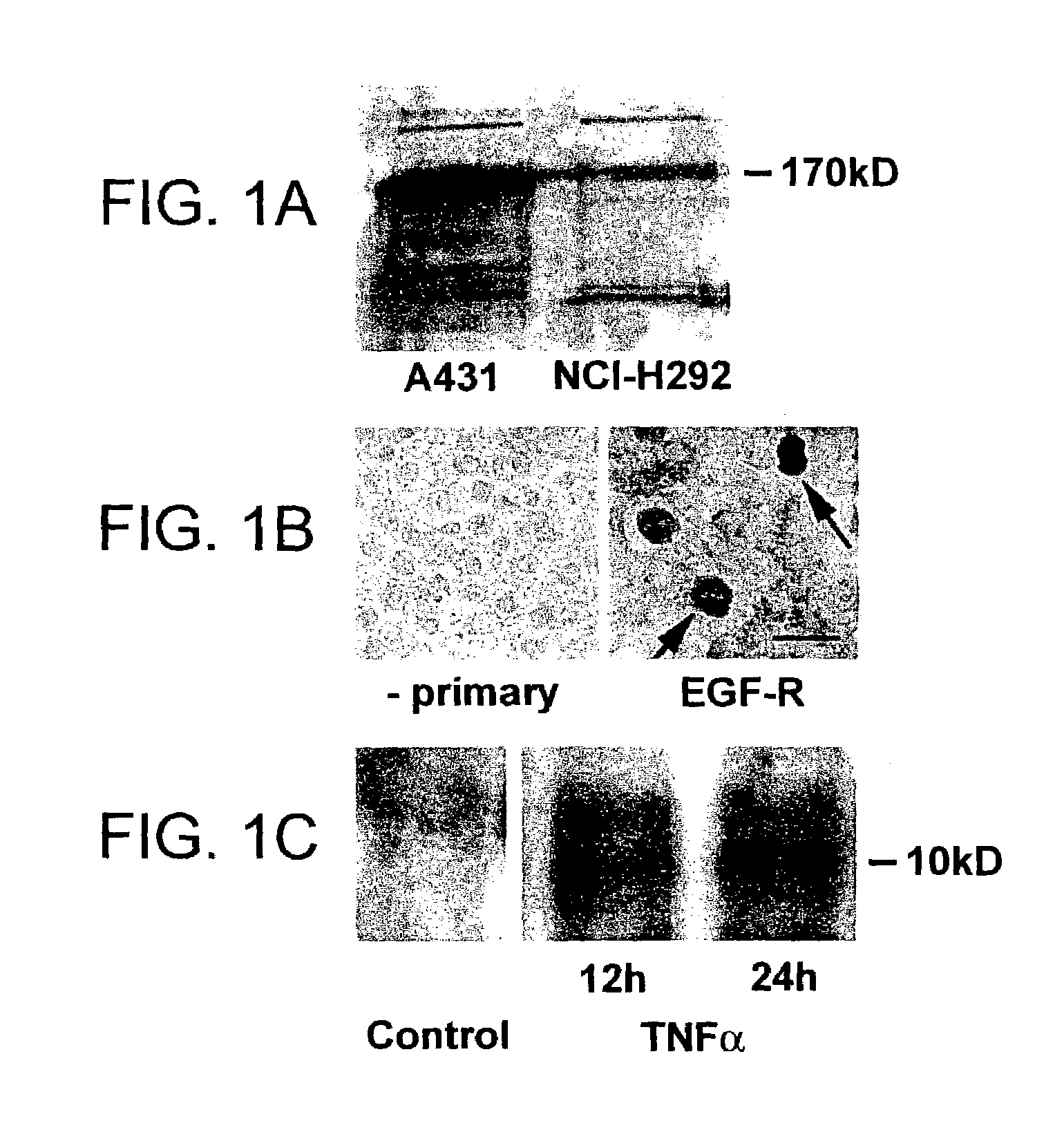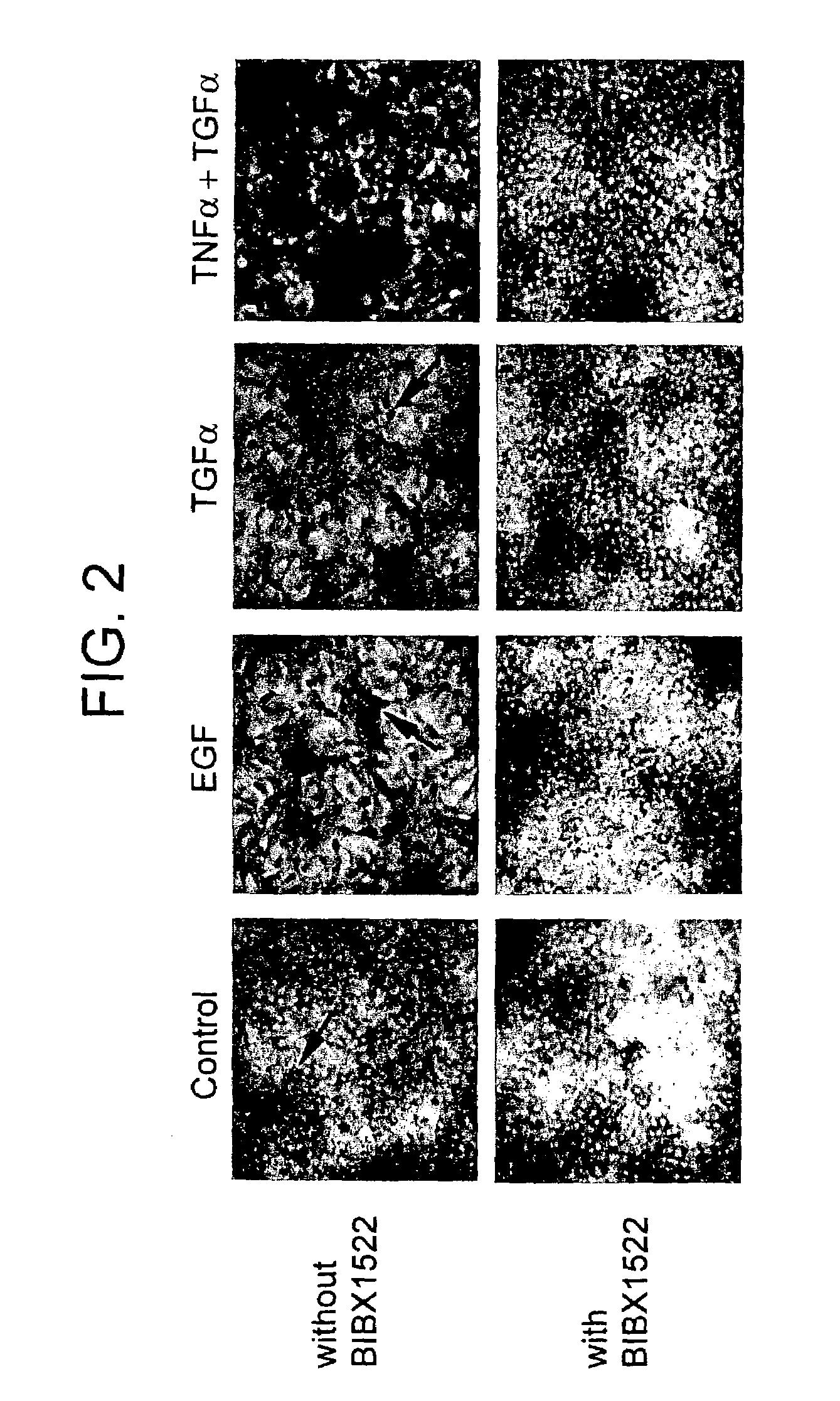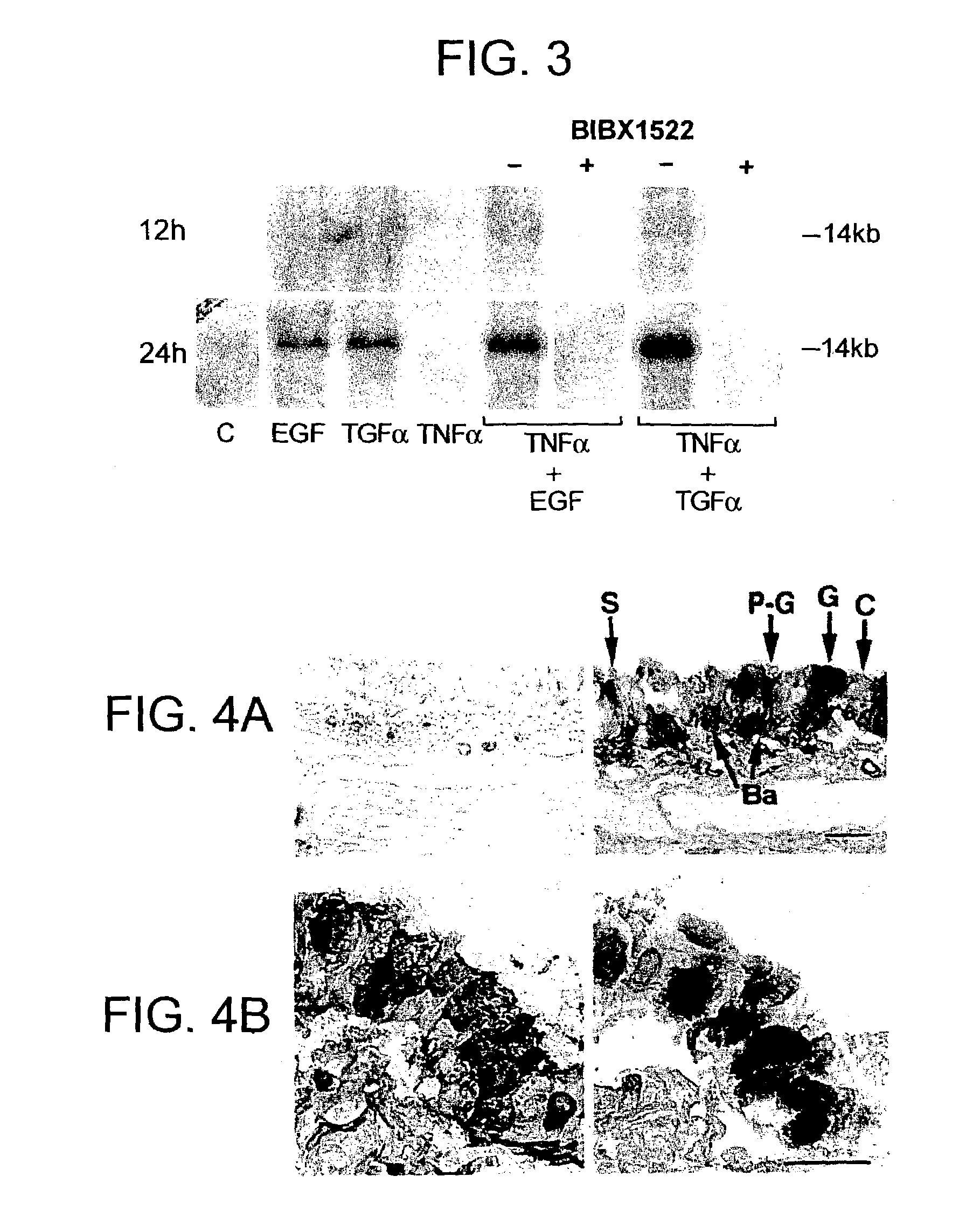Preventing airway mucus production by administration of EGF-R antagonists
a technology of egfr and antagonist, which is applied in the direction of depsipeptides, peptide/protein ingredients, and aerosol delivery, etc., can solve the problems of increasing the risk of airway plugging by mucus, and increasing the risk of airway obstruction. , to achieve the effect of preventing excessive formation of mucus, and reducing the formation of mucus secretions
- Summary
- Abstract
- Description
- Claims
- Application Information
AI Technical Summary
Benefits of technology
Problems solved by technology
Method used
Image
Examples
example 1
The EGF System Regulates Mucin Production in Airways
[0132]Goblet cell hyperplasia occurs in various hypersecretory diseases of airways, but because the underlying mechanisms are unknown, no effective therapy exists. In healthy airways, goblet cells are few, but in hypersecretory airway diseases, goblet cell hyperplasia occurs. A human bronchial (NCI-H292) cell line was studied. These cells express EGF-R constitutively; EGF-R gene expression was further stimulated by tumor necrosis factor alpha (TNFα). EGF-R ligands increased the synthesis of mucins, and this effect was increased by co-incubation with TNFα.
[0133]Airway epithelial cells of pathogen-free rats expressed little EGF-R protein, but intratracheal instillation of TNFα (200 ng) induced EGF-R in basal, pre-goblet, and goblet cells, but not in ciliated cells; TNFα, EGF, or TGFα alone did not induce goblet cell production. However, instillation of TNFα, followed by EGF-R ligands resulted in an increased number of goblet and pre-...
example 2
Role of Oxidative Stress in Production of Goblet Cells
[0168]In humans, prolonged cigarette smoking has been suggested to be associated with progressive pathologic changes in peripheral airways including goblet cell hyperplasia. Likewise, experimental models of cigarette smoking in animals have been shown to cause goblet cell hyperplasia in airways. However, the mechanism by which cigarette smoke may induce mucin synthesis is unknown. The following data demonstrate that proinflammatory cytokine-activated neutrophils and cigarette smoke cause mucin MUC5AC synthesis in human bronchial epithelial cells via ligand-independentactivation of EGF-R. These results implicate recruited neutrophils and cigarette smoke as regulators of epithelial cell differentiation that may result in abnormal induction of mucin-producing cells in airways.
Methods
[0169]Isolation of Neutrophils. Human neutrophils were purified from peripheral blood obtained from healthy human donors. Neutrophil isolation was perfo...
example 3
Wounding of Airway Epithelium Causes Goblet Cell Metaplasia
[0187]It was hypothesized that agarose plugs instilled into airways would lodge chronically in bronchi without obstructing them, and that resident plugs would cause inflammation, resulting in goblet cell metaplasia. It is shown that agarose plugs induce marked local production of goblet cells, as shown by Alcian blue / PAS-positive staining and mucin MUC5AC gene expression, associated with local recruitment of inflammatory cells. The results implicate EGF-R activation in plug-induced goblet cell metaplasia.
Methods
[0188]Animals. The experimental animal protocol was approved by the Committee on Animal Research of the University of California San Francisco. Specific pathogen-free, male F344 rats (230 to 250 g body weight; Simonsen Lab., Gilroy, Calif.) were used. The rats were housed in pathogen-free BioClean cages with environmentally controlled laminar flow hoods; animals had free access to sterile food and water.
[0189]Drugs. D...
PUM
| Property | Measurement | Unit |
|---|---|---|
| Fraction | aaaaa | aaaaa |
| Fraction | aaaaa | aaaaa |
| Fraction | aaaaa | aaaaa |
Abstract
Description
Claims
Application Information
 Login to View More
Login to View More - R&D
- Intellectual Property
- Life Sciences
- Materials
- Tech Scout
- Unparalleled Data Quality
- Higher Quality Content
- 60% Fewer Hallucinations
Browse by: Latest US Patents, China's latest patents, Technical Efficacy Thesaurus, Application Domain, Technology Topic, Popular Technical Reports.
© 2025 PatSnap. All rights reserved.Legal|Privacy policy|Modern Slavery Act Transparency Statement|Sitemap|About US| Contact US: help@patsnap.com



